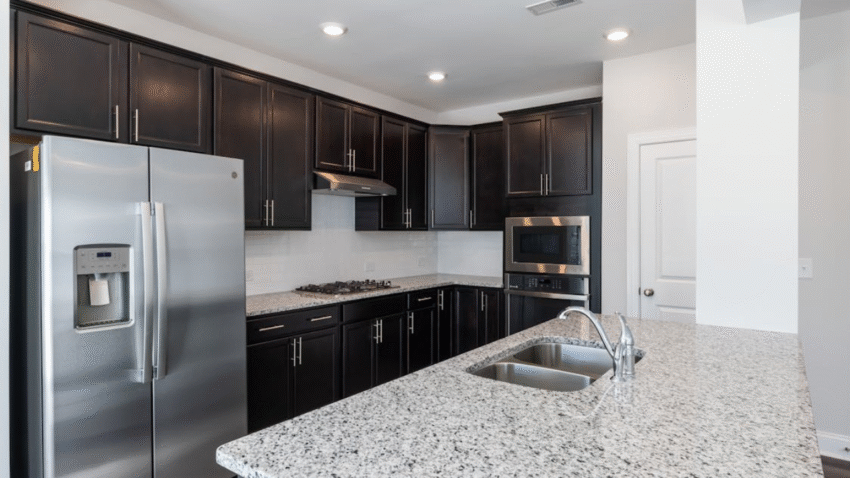Introduction
Want to level up your baking skills and get consistent, professional results every time? The secret weapon isn’t a fancy mixer—it’s a kitchen scale. In this complete guide, you’ll learn how to use a kitchen scale for baking and why it’s the most precise, reliable method for measuring ingredients. Say goodbye to guesswork and hello to perfect cookies, cakes, and breads every time.
Why Using a Kitchen Scale Matters in the Kitchen
Baking is a science. Unlike cooking, where a pinch of this or that can be improvised, baking requires precise measurements to achieve the right texture, rise, and flavor. A kitchen scale ensures accuracy by weighing ingredients instead of relying on measuring cups, which can vary widely depending on how ingredients are packed.
Using a scale in baking:
- Increases accuracy and consistency
- Reduces dishwashing (fewer cups and spoons!)
- Improves results for delicate recipes like pastries or macarons
- Helps you follow international or professional recipes using metric units
It’s a game-changer for anyone who wants to bake like a pro at home.
Step-by-Step Guide to Using a Kitchen Scale for Baking
1. Choose the Right Kitchen Scale
Not all scales are created equal. Look for a digital kitchen scale that:
- Measures in grams and ounces
- Has a tare (zero-out) function
- Offers a flat surface for bowls and containers
- Is accurate to at least 1 gram or 0.05 ounces
Kitchen Tip: Avoid analog scales—they’re less accurate and harder to read, especially for small measurements.
2. Place the Scale on a Flat, Level Surface
Set the scale on your kitchen counter, not a towel or uneven surface. This ensures an accurate reading and prevents tipping or spills.
Pro Tip: Keep the scale near your baking station so you can measure and mix in the same spot for convenience.
3. Use the Tare Function to Zero the Scale
Place your mixing bowl or measuring container on the scale and press the “tare” button. This resets the display to zero, so the scale only measures the ingredient—not the container.
Reminder: Tare before every new ingredient so you don’t have to do any math!
4. Weigh Each Ingredient Directly Into the Bowl
Slowly add your ingredient until the desired weight is reached. Most baking recipes list ingredients in grams (or ounces), so you can follow along precisely.
Common conversions:
- 1 cup flour ≈ 120g
- 1 cup sugar ≈ 200g
- 1 stick butter ≈ 113g
Kitchen Hack: Add ingredients in order without switching bowls—just tare between each one to keep track.
5. Use Grams for Maximum Precision
While some scales offer ounces and pounds, grams are more precise—especially for small quantities like baking soda, yeast, or salt.
Example: 1/4 tsp of salt is roughly 1.5 grams. A scale helps ensure you don’t add too much or too little.
6. Weigh Wet and Dry Ingredients the Same Way
You can weigh both wet (milk, oil, eggs) and dry (flour, sugar, cocoa powder) ingredients on a kitchen scale. Just use a bowl or cup that won’t spill and reset the scale before each one.
Tip: 1 milliliter of water = 1 gram, which makes liquid measuring easy and precise when using grams.
7. Clean the Scale After Use
Once you’re done baking, wipe down the surface with a damp cloth. Don’t submerge your digital scale in water, and avoid letting ingredients spill into the buttons or display.
Optional: Store your scale in a drawer or upright on a shelf to keep it safe and out of the way.
Common Mistakes to Avoid
Mistake 1: Not Taring Between Ingredients
Solution: Always press the tare button after adding each ingredient. This resets the scale and avoids incorrect totals.
Mistake 2: Relying on Volume for Dry Ingredients
Solution: Measuring cups can vary based on how tightly ingredients are packed. Weighing eliminates this variability—especially for flour.
Mistake 3: Using the Scale on an Uneven Surface
Solution: Set your scale on a solid, flat countertop. Avoid textured or sloped surfaces that affect accuracy.
Mistake 4: Switching Between Units Mid-Recipe
Solution: Stick to one unit system throughout your recipe—preferably grams. Switching back and forth between ounces and grams can cause errors.
Mistake 5: Skipping the Manual
Solution: Every scale is a little different. Read the instruction manual to understand how yours works, including unit switching and battery replacement.
Extra Tips & Kitchen Hacks
Tip 1: Create Your Own Recipe Conversions
If you have a favorite recipe that uses cups, weigh each ingredient next time and write down the equivalent in grams. This makes future baking faster and more precise.
Tip 2: Use Small Bowls for Tiny Measurements
For ingredients under 10 grams, like yeast or baking powder, use a small dish to weigh separately before adding to the main bowl. This helps avoid overpouring.
Tip 3: Batch Your Baking
Using a kitchen scale makes it easy to double or triple a recipe accurately. Just multiply the ingredient weights and bake in larger batches for meal prep or events.
Related Task: Ready to perfect your ingredients? Check out How to Measure Flour the Right Way in our baking basics series.
Conclusion
Learning how to use a kitchen scale for baking is one of the smartest habits you can adopt in the kitchen. With precise, mess-free measurements and fewer tools to wash, you’ll bake with greater confidence and better results every time.
Start with one or two recipes using your kitchen scale and feel the difference for yourself. Bookmark this guide, keep your scale nearby, and get ready to take your baking to the next level—accurately, efficiently, and deliciously.
